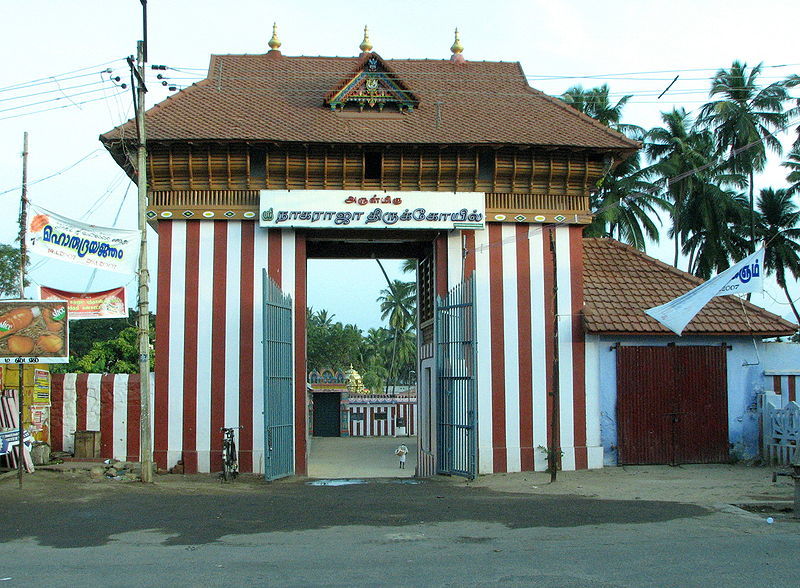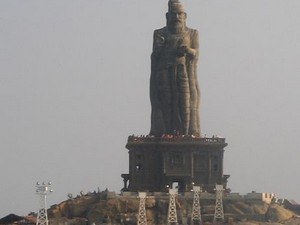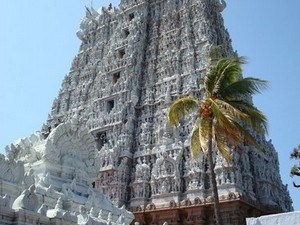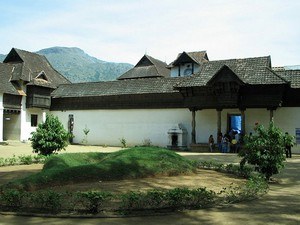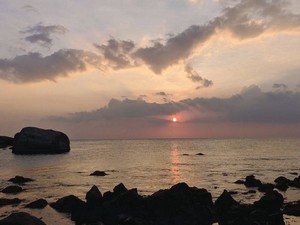Nagaraja Temple - Nagercoil, Kanyakumari - Timings, Festivals, History, Darshan, Pooja Timings
Photo Credit: Flickr
 #7 of 35 Places to Visit in Kanyakumari
#7 of 35 Places to Visit in Kanyakumari
 Distance (From Kanyakumari): 20 Kms
Distance (From Kanyakumari): 20 Kms
 Trip Duration (Including Travel): 2 Hours
Trip Duration (Including Travel): 2 Hours
 Place Location: In Nagarcoil Town
Place Location: In Nagarcoil Town
 Transportation Options: Bus / Cab
Transportation Options: Bus / Cab
 Travel Tips: Udayagiri Fort (14 Kms) can be visited along with this place
Travel Tips: Udayagiri Fort (14 Kms) can be visited along with this place
About Nagaraja Temple
At a distance of 20 Km from Kanyakumari, the Nagaraja Temple is a prominent Hindu shrine in Nagercoil, Tamil Nadu. This temple, dedicated to the serpent king Nagaraja, is one of the must-visit places as part of the Kanyakumari leisure packages. The town derived its name Nagercoil from this temple, as it translates to 'the temple of the Nagas.' It is widely believed that participating in the Ayilya Pooja held in October and November at the Nagaraja Temple can alleviate issues related to Nagadosha, fertility challenges, and marriage difficulties.
History of Nagaraja Temple
The Nagaraja Temple, located in Nagercoil is thought to have initially served as a Jain temple honoring Nagaraja and Parsvanatha. Over time, it transitioned into a Hindu temple, likely influenced by the decline of Jainism and the emergence of Hindu bhakti movements in the area. Early Digambara Jain texts and Hindu writings do not reference this temple, making it challenging to ascertain the age of its main structure. The mandapam of the oldest shrine prominently displays Jain Tirthankara figures near the sanctum, and the artwork on the mandapam pillars resembles that found in Tamil Nadu temples constructed between the 9th and 12th centuries. The Nagaraja Temple contains nine inscriptions; eight are located on slabs within the main temple, while the ninth, dating from Kollam 764 (1590 CE), is situated on the west wall of the Krishna shrine. All inscriptions document offerings made to Nagaraja and other deities in the temple, attributed to priests with Jaina-style names.
Mythology of Nagaraja Temple
Numerous myths and legends are linked to the temple. One particular tale concerning the Nagaraja Temple in Nagercoil tells of a girl who, while cutting grass, inadvertently harmed a five-headed serpent. This incident prompted the villagers to construct a temple as a means of protection. It is believed that, to this day, no one in the vicinity of the temple has succumbed to a snake bite. Additionally, some stories indicate that Sri Vira Udaya Marthanda Varma, the ruler of Venad, restored the temple after being healed of leprosy through his penance performed there.
Architecture of Nagaraja Temple
The Nagaraja Temple comprises three distinct shrines. The oldest and principal shrine is dedicated to the five-headed Nagaraja, the serpent king. The second shrine honors Ananthakrishna, who is depicted dancing on a coiled serpent alongside Rukmini and Satyabhama, while the third shrine is devoted to Lord Shiva. The sanctum of the main shrine has retained its original structure, featuring a sandy floor, a mud-walled chamber, and a low thatched roof. Devotees visiting the temple are given a small amount of sand scooped from the sanctum's floor. Each year, during the annual chariot festival, the thatched roof is restored, and the sandy floor is replenished with fresh river sand.
The main shrine, dedicated to Nagaraja, includes a mandapa supported by sixteen pillars, each adorned with four faces. Among the sixty-four pillar faces, six are representations of Jain Tirthankaras and the Jain goddess Padmavati Devi, while the remaining fifty-eight depict various Hindu deities, featuring iconography common to both Jain and Hindu temples. The temple also has an adjoining water tank and an open prakara (circumambulation path) lined with numerous stone motifs of Naga.
Separate shrines for Lord Kasi Viswanathar, Kannimoola Ganapathi, and Anantha Krishna are also present within the temple complex. Notably, the final puja of the day is conducted for Lord Ananthakrishna rather than the principal deity, Nagaraja. Additionally, the temple boasts a beautiful garden filled with enchanting Nagalinga flowers. There is a sannadhi for Goddess Durga, situated near a sacred natural spring, which is why she is referred to as 'Theertha Durgai.'
Devotees experiencing challenges due to the planetary influences of Rahu and Kethu frequent the temple every Tuesday to seek blessings during the Raahu kalam period.
Festivals of Nagaraja Temple
The main festival of Nagaraja Temple is the annual Brahmotsavam which occurs in the Tamil month of Thai (January/February). This ten-day event features a chariot festival, during which the deities of the temple, including Lord Nagaraja, are paraded in procession. Additionally, the temple observes other significant festivals such as Nagapanchami, the Navaratri festival in September/October, the Ayilyam festival in October/November, and Thirukarthigai in November/December.
Nagercoil Nagaraja Temple Dress Code & Other Restrictions
When planning a visit to the Nagaraja Temple in Suchindram, it is recommended to adhere to modest clothing that covers your upper arms and legs as a sign of respect. Men are encouraged to wear a dhoti or pajama paired with an upper garment, as well as formal trousers and shirts. Women may opt for a saree, half saree, or churidhars. Men need to remove their shirt before entering the sanctum sanctorum of the temple. It is advisable to refrain from wearing contemporary attire such as mini-skirts, jeans, shorts, and sleeveless tops while on the temple grounds.
Non-Hindus are welcome to explore the temple complex and appreciate its architectural beauty; however, access to the sanctum sanctorum may be restricted.
Nagaraja Temple Timings
Monday: 4:30 AM - 11:30 AM & 5 PM - 8 PM
Tuesday: 4:30 AM - 11:30 AM & 5 PM - 8 PM
Wednesday: 4:30 AM - 11:30 AM & 5 PM - 8 PM
Thursday: 4:30 AM - 11:30 AM & 5 PM - 8 PM
Friday: 4:30 AM - 11:30 AM & 5 PM - 8 PM
Saturday: 4:30 AM - 11:30 AM & 5 PM - 8 PM
Sunday: 4:30 AM - 11:30 AM & 5 PM - 8 PM
Nagaraja Temple Entry Fee
Entry is Free
Best Time to Visit Nagaraja Temple
The ideal period to explore Nagaraja Temple in Nagercoil is between October and March, with the highest influx of visitors occurring from November to February. The annual 10-day Brahmotsavam, celebrated during the Tamil month of Thai (January/February), presents a unique chance to experience the vibrant atmosphere of the temple, attracting thousands of worshippers. It is recommended to refrain from visiting during the peak summer months of April to June, as the soaring temperatures can make outdoor activities challenging.
How to Reach Nagaraja Temple
Trivandrum Airport serves as the closest airport, located approximately 71 kilometers from Nagercoil. Nagercoil Junction is well-connected by rail to major cities such as Chennai, Bangalore, Mumbai, Trichy, Madurai, Hyderabad, Delhi, Trivandrum, Kochi, Kolkata, and Jammu. Additionally, there is excellent bus service linking Nagercoil to Kanyakumari, Trivandrum, Madurai, Trichy, Tirunelveli, Pondicherry, Kochi, Chennai, and Bangalore. The Nagercoil Temple can be accessed by taking a bus or by hiring an auto-rickshaw or cab from Kanyakumari.



